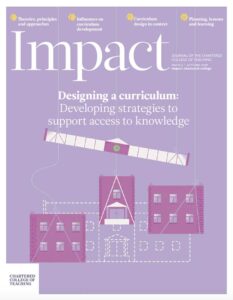Designing a curriculum for trainee teachers
Written by: Dominic Shibli and James Garelick

5 min read
In September 2017, Dom met his first cohort of secondary PGCE students. He was delivering the subject-specific module, Teaching and Learning in Science. James was one of the PGCE trainees on the School Direct route into teaching. This is some of their reflections on the year with a particular focus on the planning of the course, the use of cognitive science and how the course content was received and enacted.
Perspectives from a teacher educator
Dom Shibli
As a new teacher educator, I was guided towards the Carter Review of 2015, which highlighted the need for Initial Teacher Training (ITT) to develop ‘evidence-based teaching’ and support trainee teachers to become ‘intelligent consumers of research’ (Carter, 2015). This echoed my own personal development as I engaged with research at school, although I think ‘evidence-informed’ is a more realistic approach than evidence-based.
The Learning and Teaching in Science module was based on the premise that ‘if you want
Join us or sign in now to view the rest of this page
You're viewing this site as a guest, which only allows you to view a limited amount of content.
To view this page and get access to all our resources, join the Chartered College of Teaching (it's free for trainee teachers and half price for ECTs) or log in if you're already a member.
This article was published in September 2018 and reflects the terminology and understanding of research and evidence in use at the time. Some terms and conclusions may no longer align with current standards. We encourage readers to approach the content with an understanding of this context.
0
0
votes
Please Rate this content
Subscribe
Please login to comment
0 Comments
Oldest
Newest
Most Voted
Inline Feedbacks
View all comments










